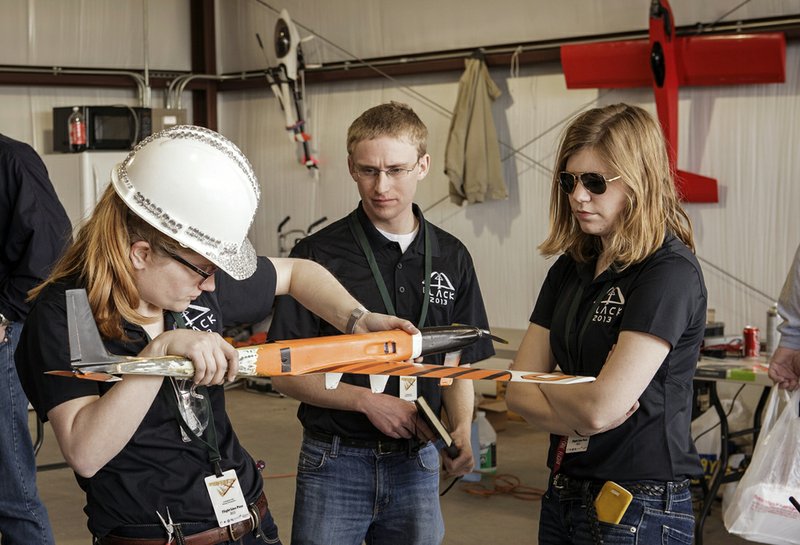TULSA, Oklahoma — At the time it premiered, "Twister" put forth a fantastical science fiction idea: Release probes into a storm in order to figure out which tornadoes could develop into killers.
It's no longer fiction. Oklahoma State University researchers are designing and building sleek, Kevlar-reinforced unmanned aircraft — or drones — to fly directly into the nation's worst storms and send back real-time data to first responders and forecasters.
"We have all the elements in place that make this the right place for this study to occur," said Stephen McKeever, Oklahoma's secretary of science and technology. "We have the world's best natural laboratory."
Oklahoma is the heart of Tornado Alley, and has emerged battered, yet standing, from seven tornadoes with winds exceeding 200 mph — tied with Alabama for the most EF5 storms recorded. The May 20 tornado in Moore that killed 24 people was one of them. The federal government's National Weather Center, with its laboratories and the Storm Prediction Center, are appropriately headquartered in Norman, but research is done statewide on Earth's most powerful storms.
If all goes as planned, OSU's research drones will detect the making of a tornado based on the humidity, pressure and temperature data collected while traveling through the guts of a storm -- critical details that could increase lead time in severe weather forecasts.
The drones would also be equipped to finally answer meteorologists' most pressing questions.
"Why does one storm spawn a tornado and the other doesn't, and why does one tornado turn into an EF1 and another into an EF5?" asked Jamey Jacob, professor at OSU's School of Mechanical and Aerospace Engineering, which is developing the technology.
The drones could be operating in roughly five years, designers estimate. But there are limitations on immediately using the technology, including current Federal Aviation Administration rules that mandate where and how drones can be safely launched in U.S. air space. The agency's regulations also require operators of such machines to physically see the aircraft at all times, limiting the range to a mile or two.
